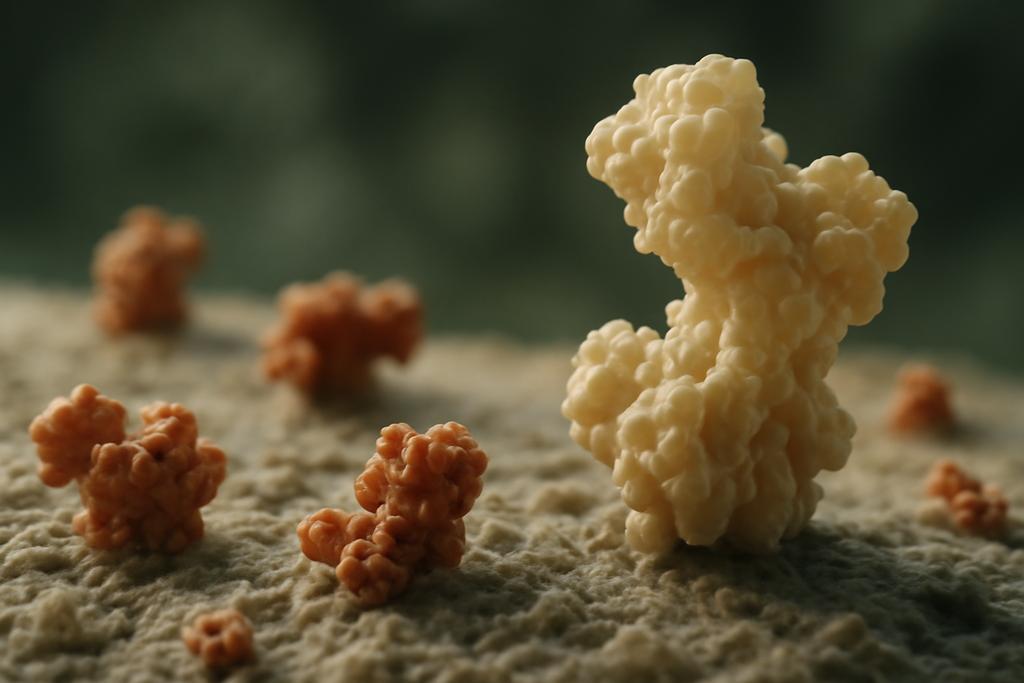Why the Surface Matters More Than You Think
Proteins are the microscopic machines of life, folding into intricate shapes that dictate how they interact with each other. These interactions—whether a handshake between enzymes or a lock-and-key fit with a drug molecule—are often decided by the protein’s surface. It’s the chemical and geometric fingerprint on this surface that governs binding affinity, the strength with which proteins stick together or to other molecules.
Until recently, computational models predicting changes in binding affinity—especially when proteins mutate—have mostly focused on the entire atomic structure. These models, like the state-of-the-art GearBind, treat the protein as a 3D jigsaw puzzle of atoms, implicitly learning surface features from the whole structure. But what if the surface itself could be given a voice, an explicit language to describe its unique chemical and geometric traits?
Researchers at Amazon and MIT, led by Sharmi Banerjee and Tommi Jaakkola, have introduced Pi-SAGE, a novel graph-based encoder that does exactly this. Pi-SAGE crafts a specialized vocabulary for protein surfaces, capturing the subtle nuances of local chemical environments and shapes. By explicitly encoding these surface features and integrating them into existing models, Pi-SAGE significantly improves the prediction of how mutations affect binding affinity.
Decoding the Protein Surface with Graphs
Imagine the protein surface as a landscape dotted with hills, valleys, and charged patches. Pi-SAGE breaks this landscape down into overlapping patches, each described by seven key features: electrostatic charge, hydrophobicity, hydrogen bonding potential, shape, curvature, and two geometric angles related to the protein’s backbone atoms. These patches form nodes in a graph, connected by edges that represent spatial proximity.
This graph is then fed into a transformer-based neural network that learns to encode the surface’s fingerprint into a compact, permutation-invariant representation. The permutation invariance is crucial—it means the model’s understanding doesn’t depend on the arbitrary order in which patches are presented, much like recognizing a melody regardless of which instrument plays first.
To make this representation practical, Pi-SAGE uses a quantization step to create a “codebook”—a dictionary of surface tokens that summarize recurring chemical and geometric patterns. This codebook acts like a Rosetta Stone, translating complex surface features into discrete tokens that can be plugged into other models.
Augmenting Protein Models with Surface Intelligence
The team tested Pi-SAGE by integrating its surface tokens into GearBind, a leading model for predicting changes in binding affinity caused by mutations. They trained and fine-tuned Pi-SAGE on a massive dataset of 200,000 protein structures from the RCSB Protein Data Bank, then adapted it to the SKEMPI dataset, which contains experimental binding affinity changes for thousands of mutated protein complexes.
The results were striking. Adding Pi-SAGE’s explicit surface features boosted GearBind’s predictive accuracy by a notable margin—raising the Pearson correlation coefficient from 0.525 to 0.6 on average. This improvement outperformed not only sequence-only models but also other structure-aware models that don’t explicitly encode surface information.
What’s more, Pi-SAGE’s smaller model size compared to massive protein language models suggests that focusing on surface features is a highly efficient way to capture critical binding information. It’s like tuning into the protein’s outer whispers rather than trying to decode its entire atomic symphony.
Why This Matters Beyond the Lab
Understanding and predicting how mutations affect protein binding is a cornerstone of drug discovery, enzyme engineering, and understanding disease mechanisms. Mutations at protein interfaces can weaken or strengthen interactions, leading to drug resistance or altered biological function.
By explicitly modeling the protein surface, Pi-SAGE provides a sharper lens to foresee these changes. This could accelerate the design of better therapeutics that target protein interfaces more precisely or help engineer proteins with desired binding properties.
Moreover, Pi-SAGE’s approach of creating a surface-aware vocabulary opens new avenues for integrating geometric deep learning with biochemical intuition. It bridges the gap between raw structural data and interpretable, actionable features that computational biologists and chemists can use.
The Road Ahead
While Pi-SAGE marks a significant leap, the researchers acknowledge the complexity of their method and the need for further robustness testing. Future work will likely explore scaling the model with more data, refining the surface vocabulary, and applying it to other protein-related tasks like ligand binding or protein design.
In a world where proteins are the ultimate puzzle pieces of life, Pi-SAGE teaches us that sometimes, it’s the surface details—the subtle curves and charges—that hold the key to unlocking their secrets.










